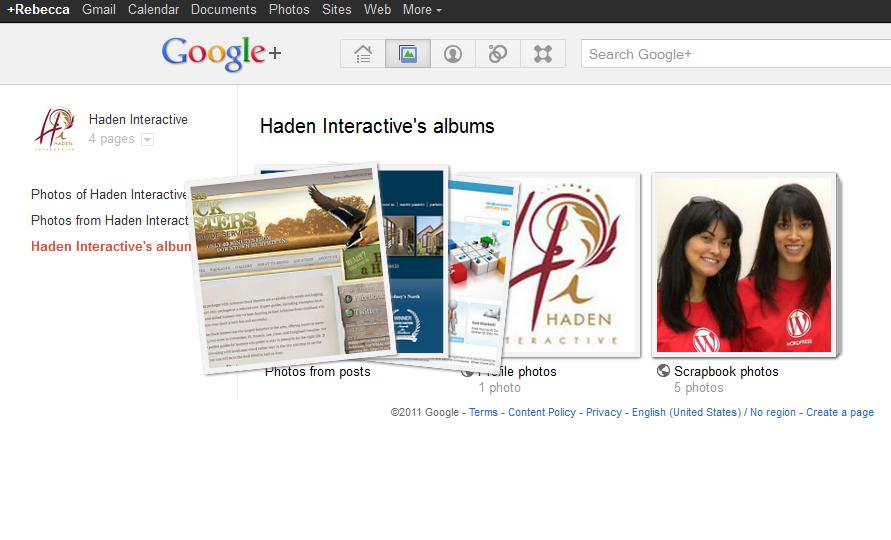Your cart is currently empty!

The Google + Quandary
A recent flow chart showed paths for decision making on where to post information. “Do you want anyone to actually see it?” it asked. If the answer was “no,” then the correct social media platform was Google +.
Quite a few people over at G+ got miffed by this, but there’s an element of truth there. As we make decisions about how to allocate resources, social media is a tough area for decision making. It can take up a whole lot of time, and we want to make sure that the time we spend there is as valuable as possible. We’ve reached the point where you can expect that your customers and clients will look for you at Facebook, Twitter, and LinkedIn, and possibly at a few other places that are basics in your field.
Should your company have a presence at Google+?
On the one hand, there aren’t as many people at G+ as at Twitter, the average number of followers is smaller, and the average number of posts is also smaller, suggesting that people visit less often. On the other hand, Google is running TV ads (with the Muppets, no less), including G+ results at the top of the SERPs for a lot of viewers, and — well, if Google doesn’t know how to drive traffic, who does?
So we say that everyone should probably get a page set up. We even set up pages for some of our clients, though we have no one who has gotten a real all-out effort. We therefore offer you the following data in the spirit of beginning the conversation (or conceivably as true confessions, since I’m about to admit how little we’ve done, because we haven’t specifically been hired by anyone to do G+).
At the G+ page for Haden Interactive, we posted new, unique content daily. We tweeted those posts occasionally, and posted from this blog once or twice a week. We shared stuff other people wrote now and then. We made no real effort to make friends there, I have to admit, but we did provide content.Visits from G+ since we set up the page amount to 1.26% of our traffic, compared with .89% from Facebook (where we make even less effort) and .26% from Twitter, where we do not have a company account — but where I have way more followers than at G+.
These numbers may sound very small, but we usually see 2% or less of traffic from any single social media channel. Search is always the highest percentage, usually half or more, with direct and referred traffic sharing the remaining half. Hundreds of referring sites share the 1/3 or so we expect to see from referred traffic, so no single source typically sends more than a few percentage points. Sites in highly social markets like bridal products or travel may have 5% or so, and we’ve heard that famous news outlets can see 7%, but we’ve never seen that high a percentage with our own eyes. In order to have a really high proportion of traffic from social media, you’d have to do pretty badly in search.
We have to conclude that G+ does well for us, as social media goes.
At the G+ page for Client #1, we posted several times a week for one month before the client decided to stop that effort. We talked with people and posted blog posts, worked on gradually building the circle, but didn’t post any unique content. Traffic from G+ amounted to .16% of their traffic from the launch of their G+ page till now. This was the largest social media result during that period.
At the G+ page for Clients #3 and 4, we set up the pages and posted enough to keep the pages from looking bald if someone came to visit. Each of these clients has had precisely zero visits from G+. The highest level of social media traffic in this group was .14% from Facebook for one of the clients.
This isn’t a proper scientific study, but we have two months of data for four pages, so it’s enough to think about. Here are our initial conclusions:
- Don’t ignore G+ just because it doesn’t have the population of a country. Make a G+ page for the future and post occasionally, even if you decide that G+ isn’t high priority for your company.
- Don’t expect this minimalist approach to do anything for your traffic. Unlike some other social media platforms, merely being present at G+ doesn’t do the job.
- You get out of it what you put into it. This is true for all social media, of course, and for much else in life, but the difference between the results with daily unique content and those with thrice-weekly reposts are striking. Having enough on the page to look good isn’t enough for results.
We’re tempted to conclude that the better results for our own company page might be the result of our being a tech company. G+ was, when it debuted, a tech enclave. We’ve seen it suggested (especially at G+) that Google Plus is somehow a more cerebral place, with more serious people in it than Facebook or LinkedIn. However, the first G+ page to find its way into over one million circles was that of Britney Spears, not obviously cerebral or techie. We’ve also seen some very active and well-done pages for consumer products and services, so we’re not prepared to make any decisions about the types of companies that ought to use G+ business pages. We think you should give it a shot.
Come over to G+ and make friends with us, okay?
by
Tags:
Comments
One response to “The Google + Quandary”
[…] The Google + Quandary, http://www.hadeninteractive.com […]

Leave a Reply